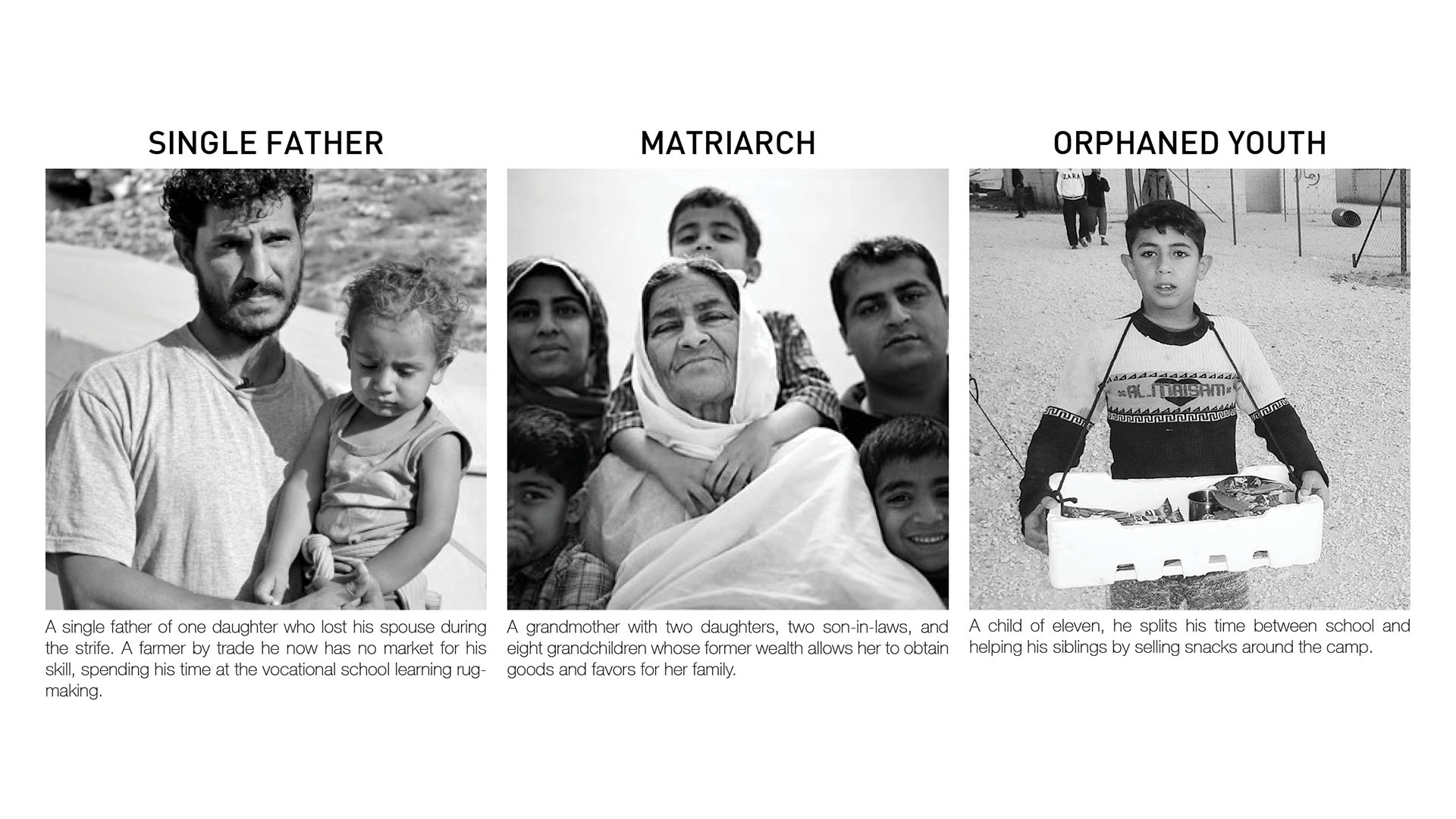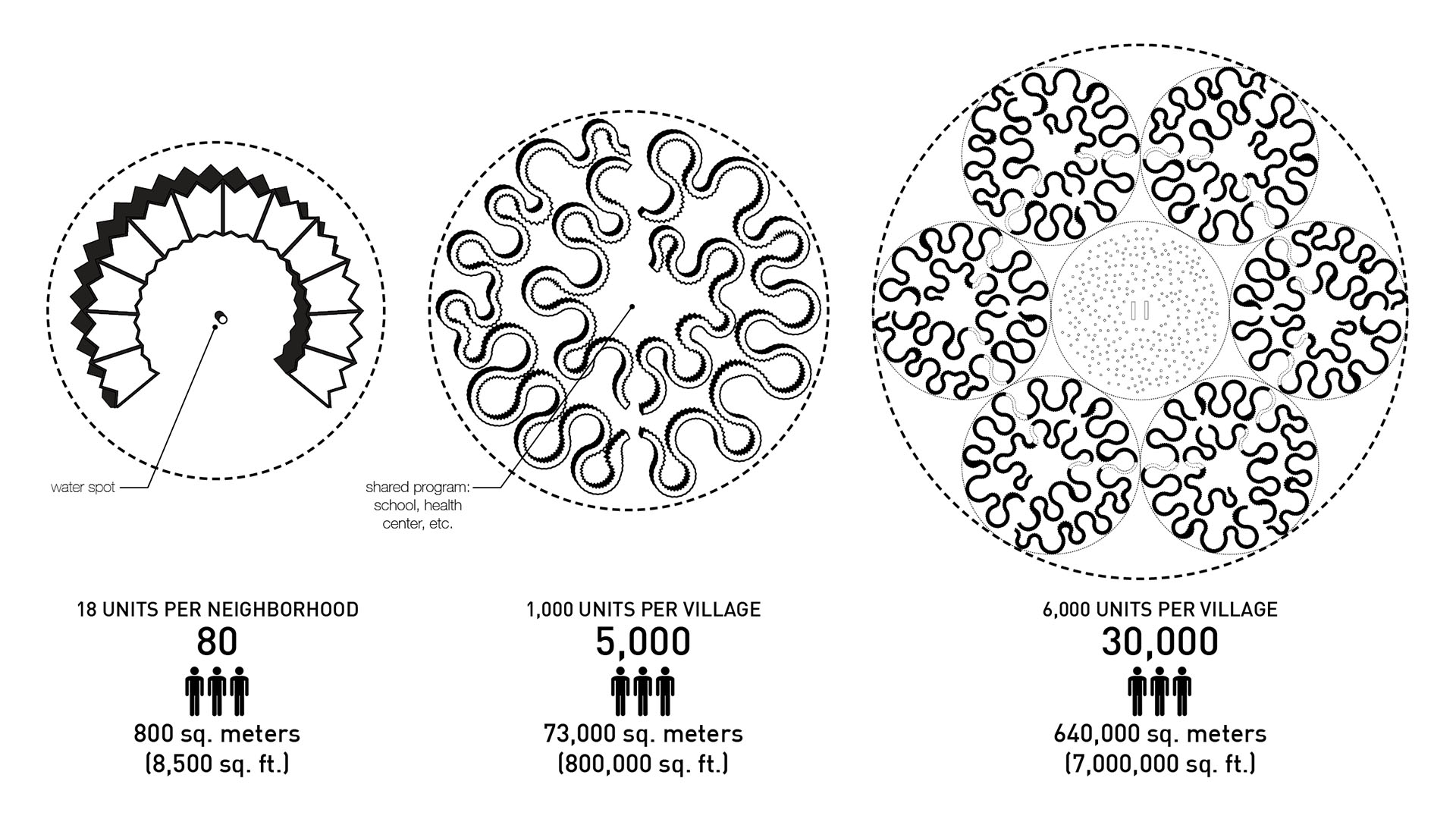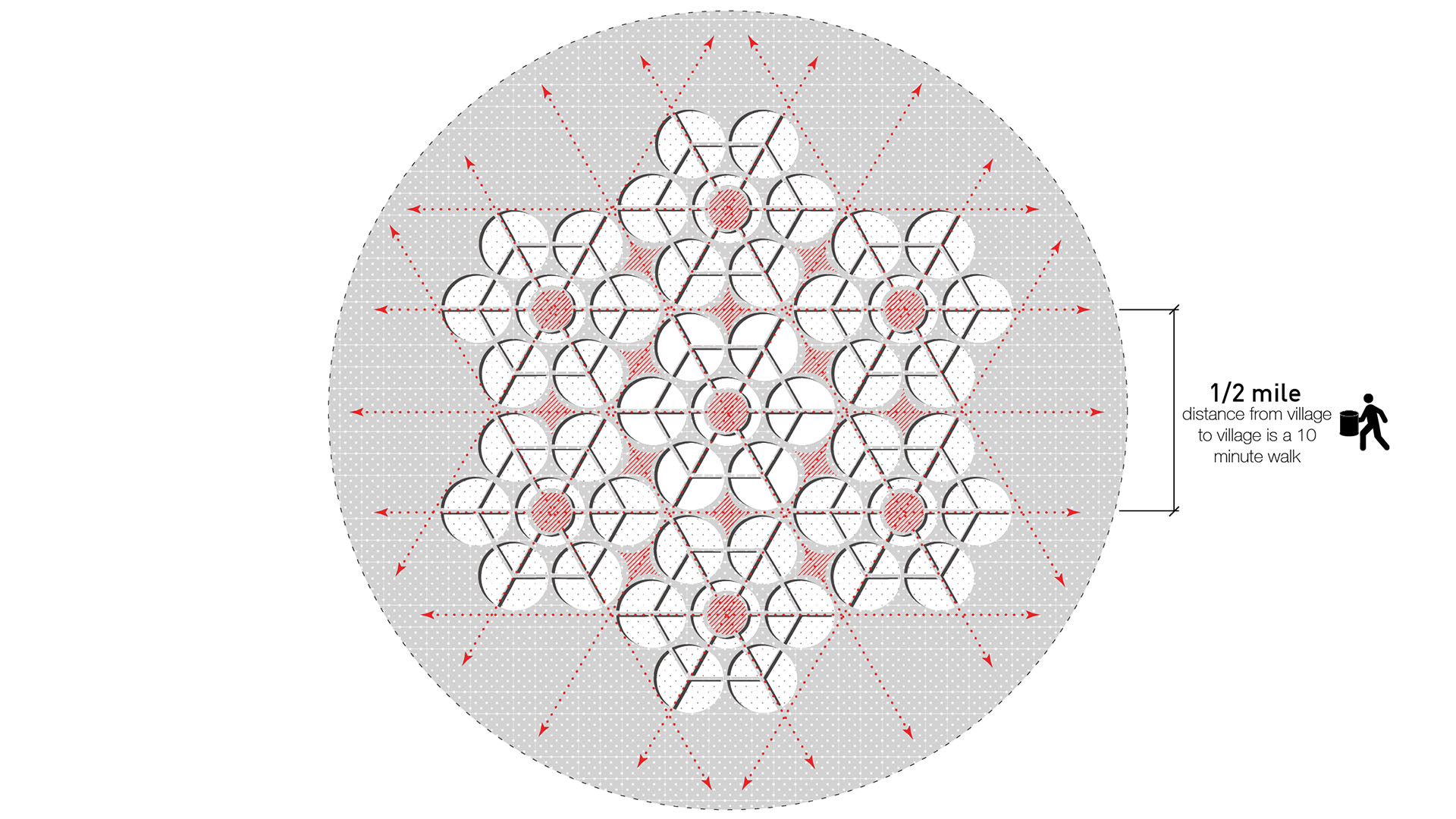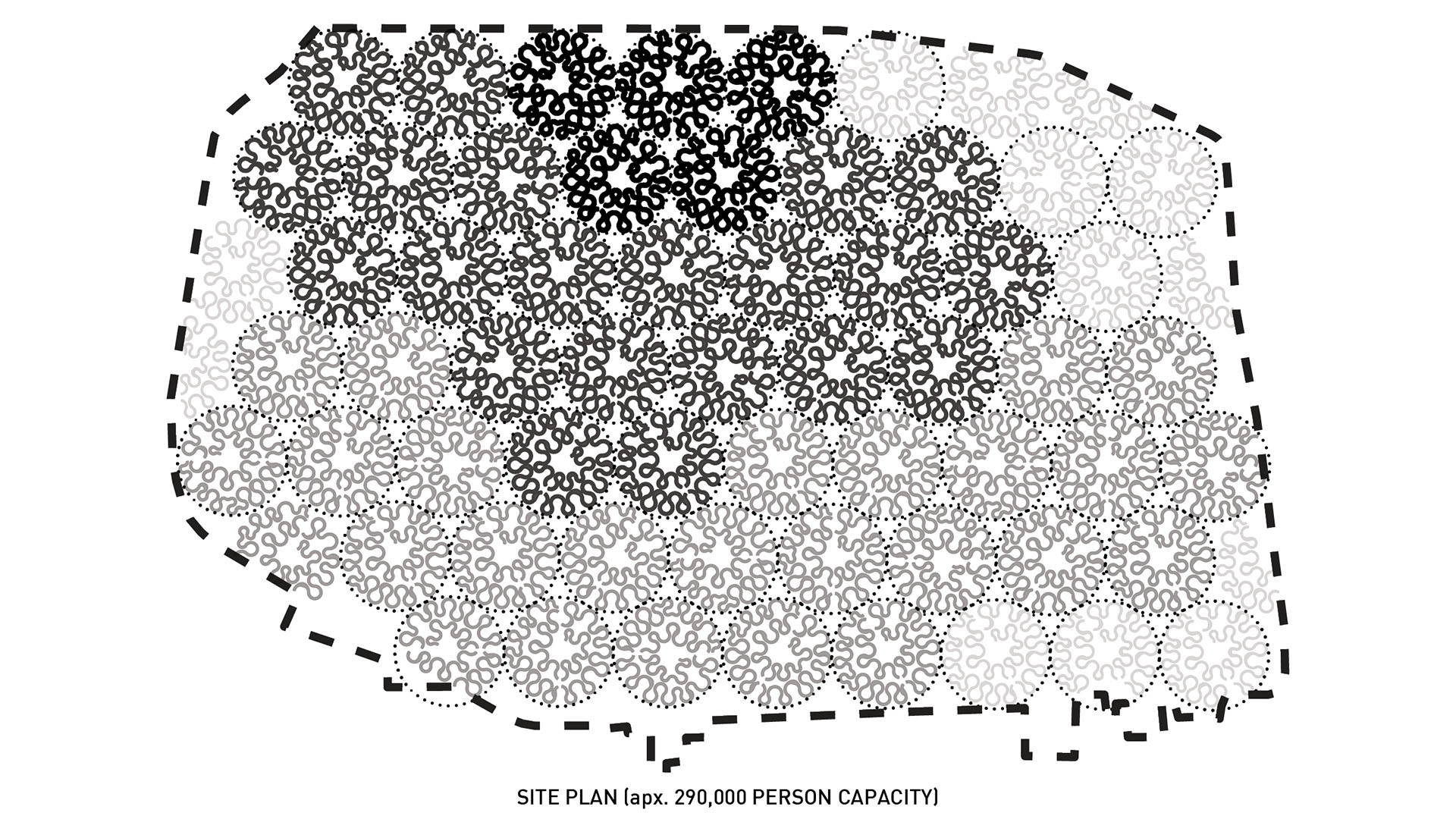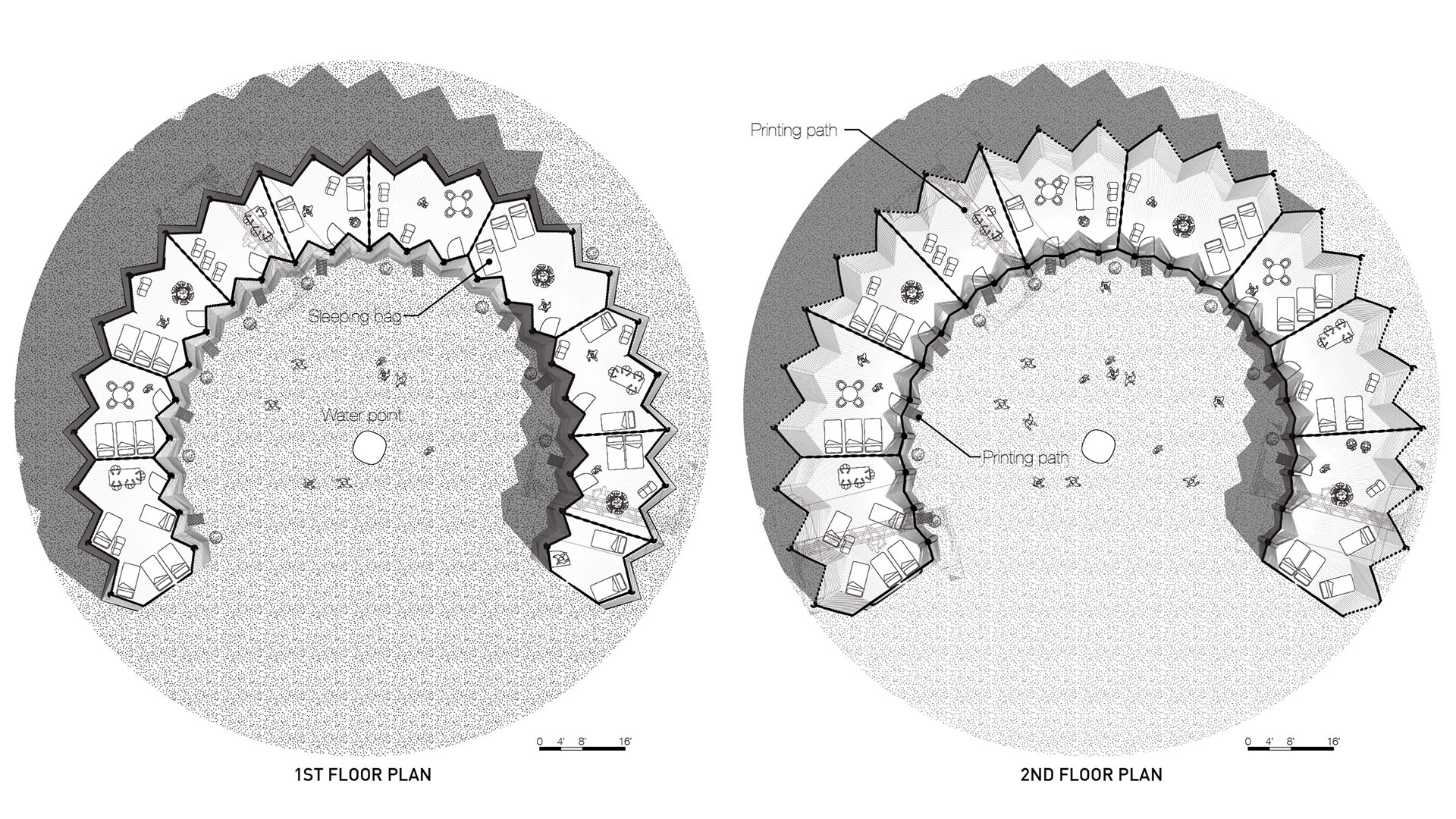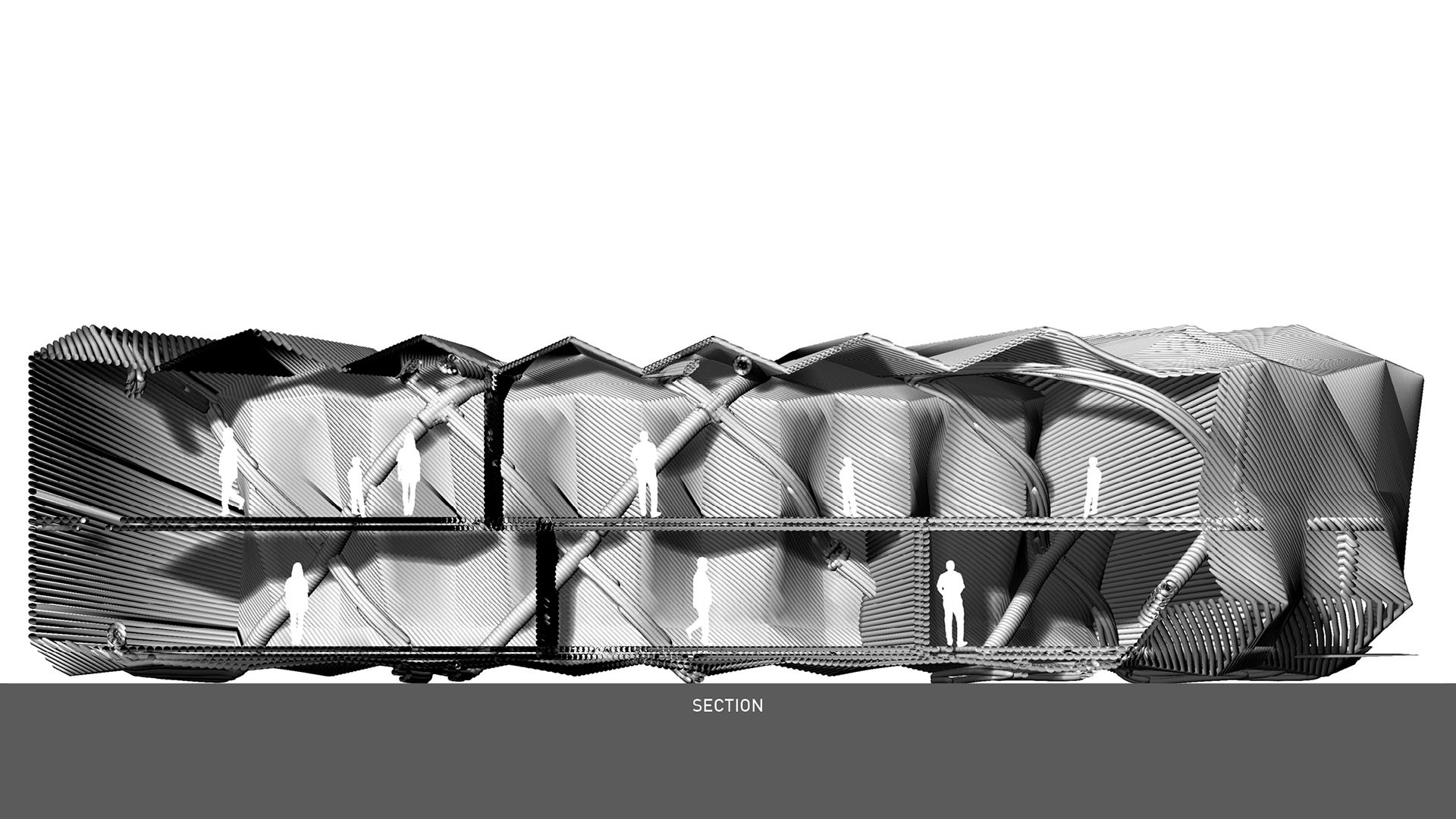The Protocols of Agency: Relational Camp Planning // Printed Displaced Settlements
Project Team: Jeff Maeshiro
Advisors: Thom Faulders (FAULDERS STUDIO), California College of the Arts
Location: Zaatari, Syria
Year: 2014
Awards: CCA MArch 2014 Thesis Prize, CCA 2014 Fall Jury Prize
Publications: ACADIA 2015



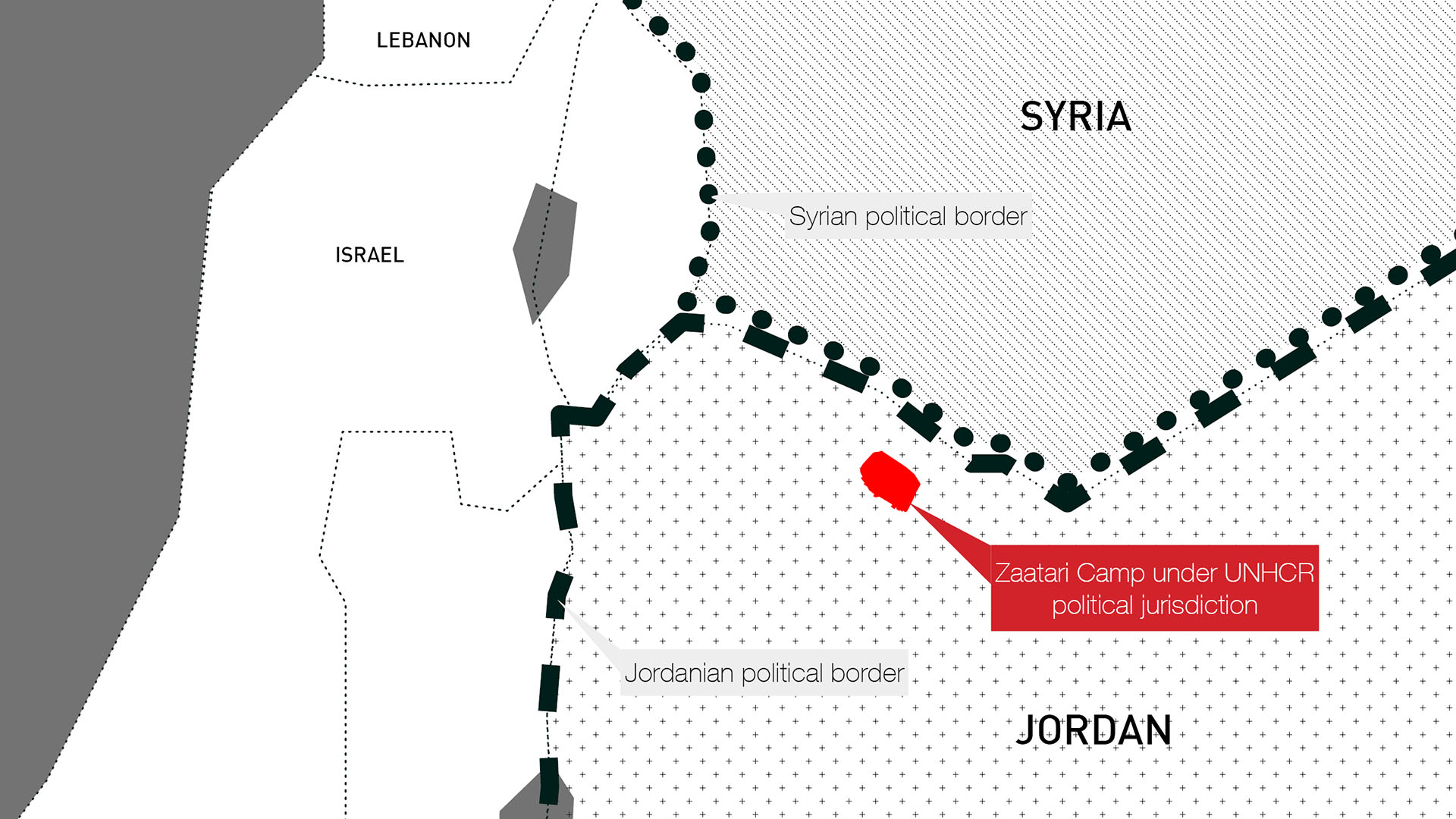




INTRODUCTION
The Protocols of Agency focuses on refugee camps, stated by the UNHCR as "the new 21st century challenge" and re-imagines these camps through the use of building-scale 3D printing. This project is situated in a near future where building-scale 3D printing technologies are ubiquitous, so that it’s less about the design of those tools, though it’s also about that, but more so how to exploit their future potentials. In his book, Camps, Charlie Hailey proposes three categories of camps: camps of autonomy, camps of control, and camps of necessity (please see Fig. 1 above). According to the UNHCR, as of 2012 there were 45.2 million displaced persons in the world (Fig. 2). The 3rd largest in the world was Camp Zaatari in Jordan (Fig. 3). While geographically located in Jordan the camp is an autonomous political region under the auspices of the UNHCR (Fig. 4).
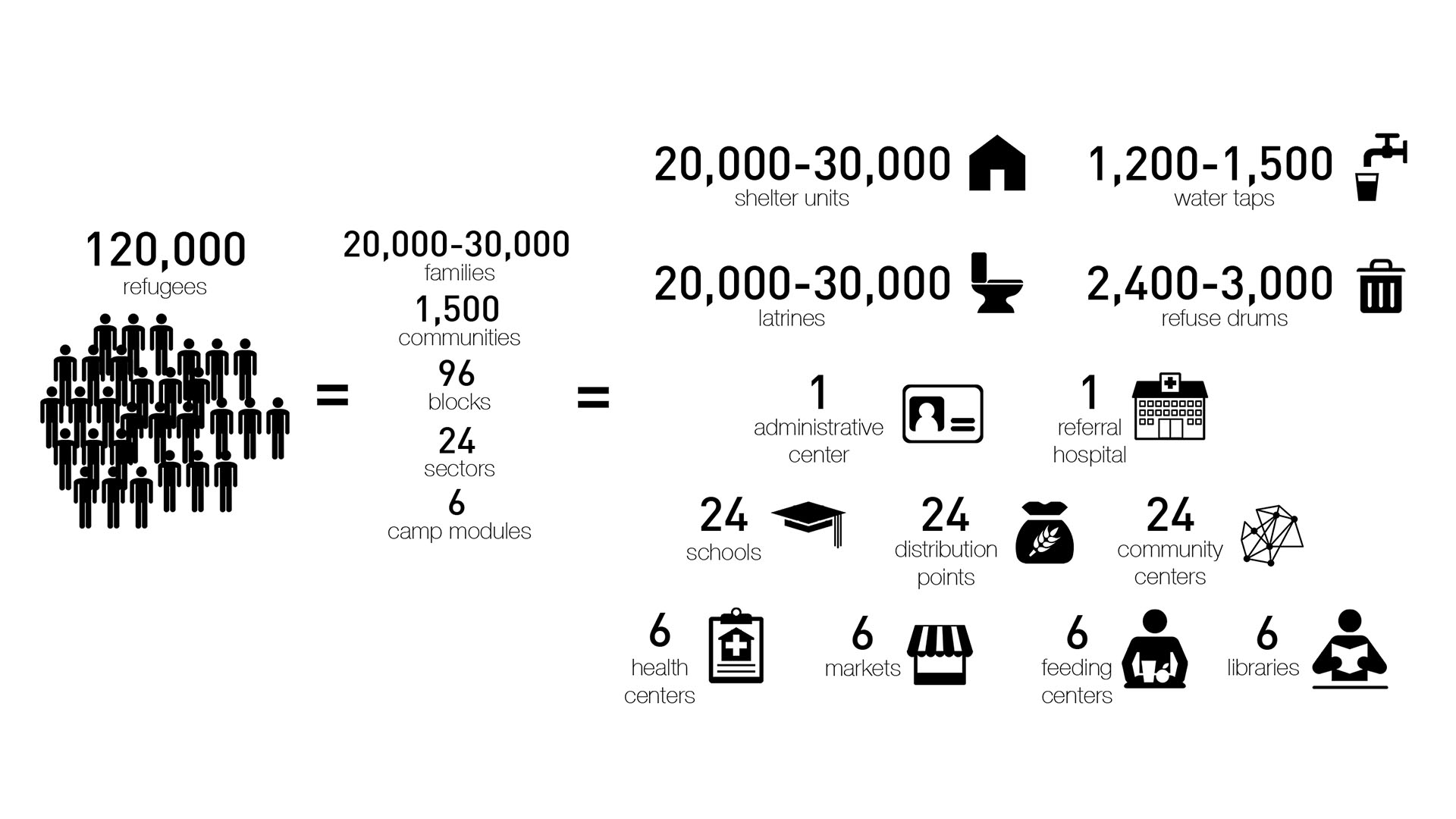
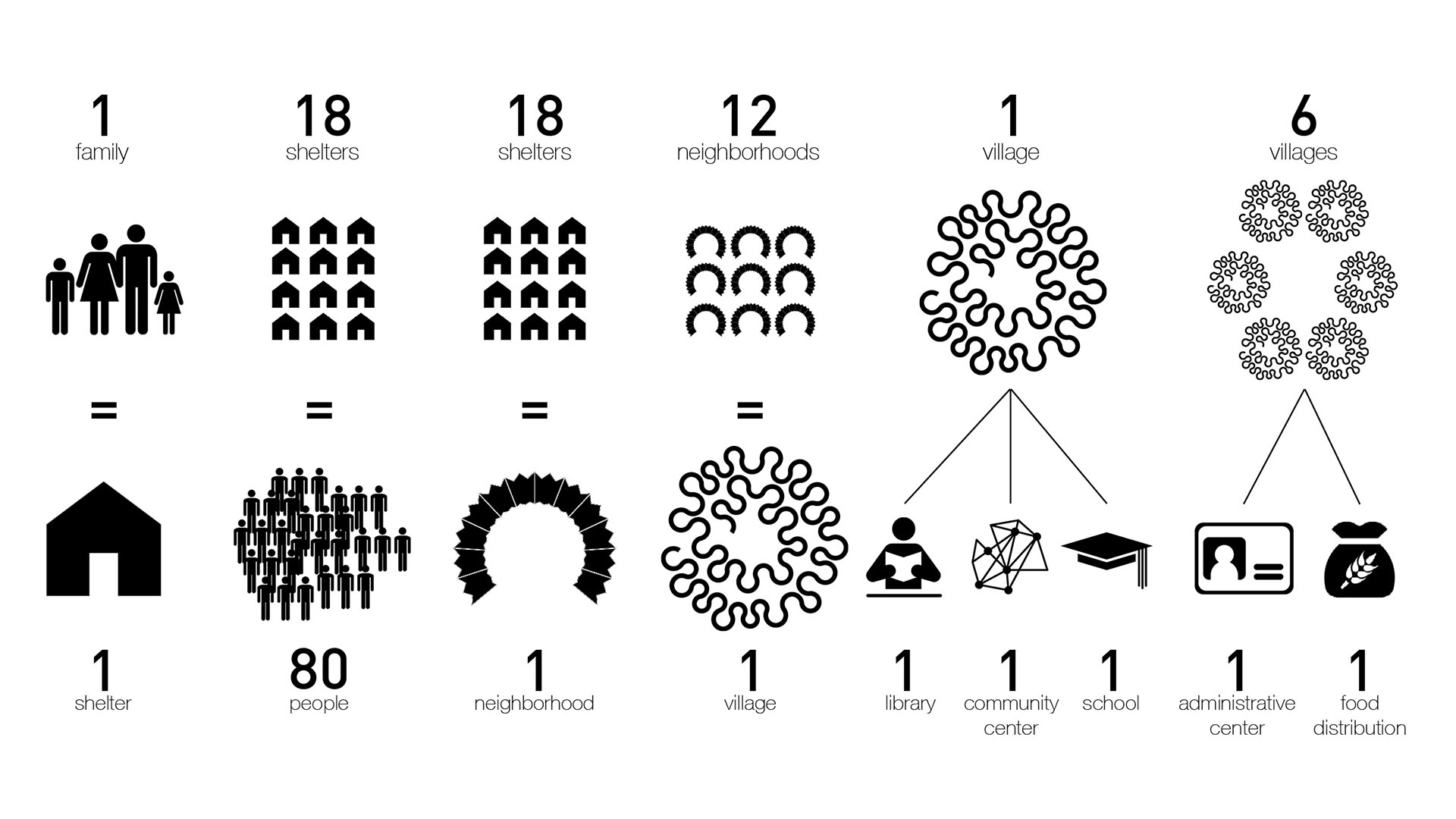
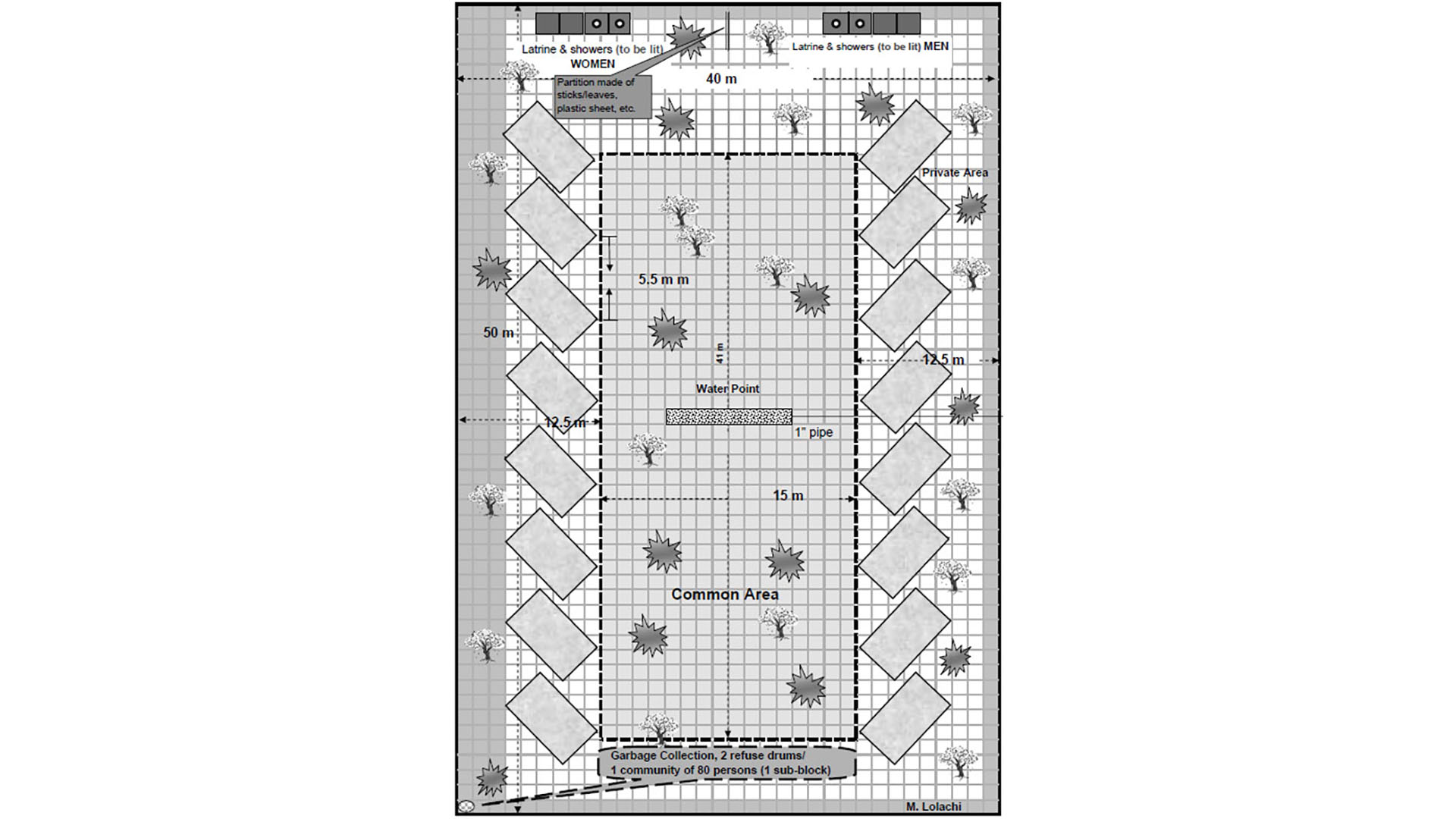
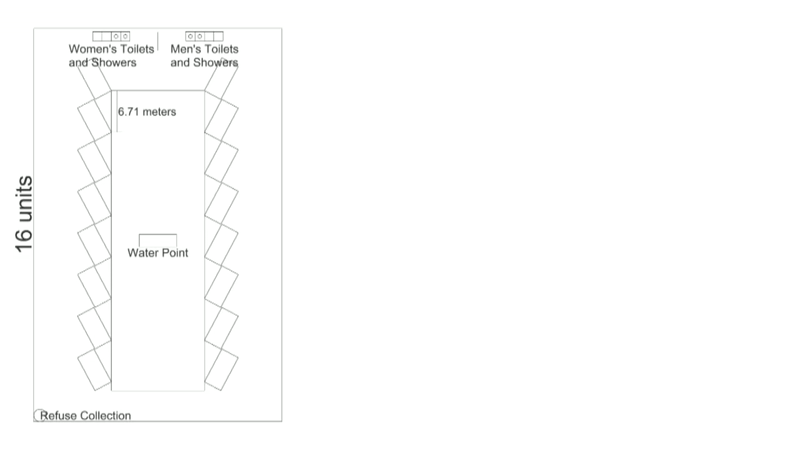
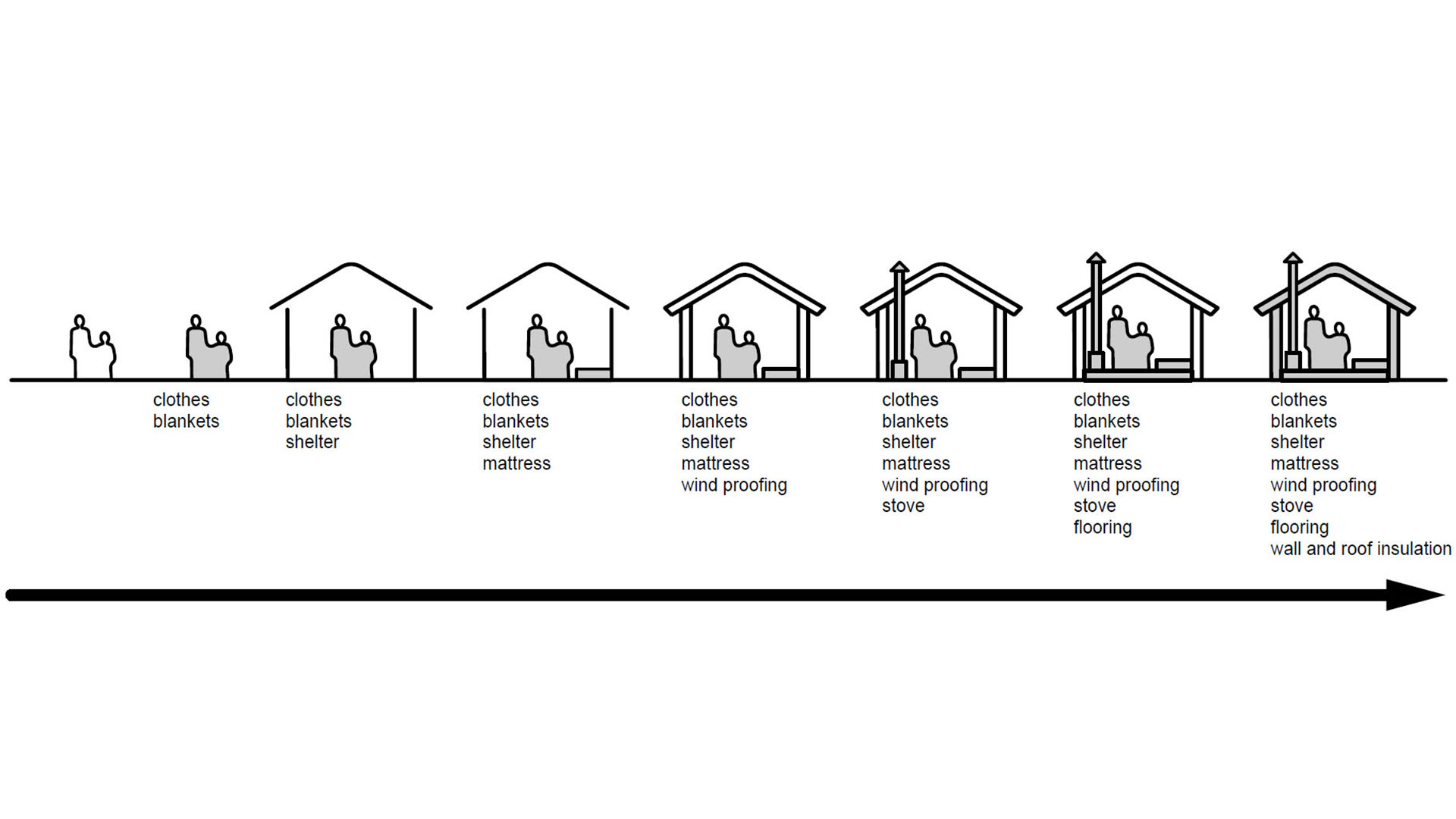

CAMP PARAMETERS
In order to have a very strict framework to work within the actual Zaatari Camp in Jordan, which houses 120,000 refugees from the Syrian conflict, was looked at for its raw parameters (Figs. 8 & 9). According to the UNHCR Handbook For Emergencies the optimal layout for a group of 16 families requires a certain range of parameters (Fig. 10). By creating a flexible algorithm to accept new parameters we can start to understand the spatial implications of their upscale (Fig. 11).
The sequence of deployment is when an event of displacement occurs, a site is chosen, typically one that is in as remote a location as possible to be still connected to shipping infrastructure, then initially tents are deployed for immediate shelter needs (Fig. 11). and then this set of four robots are sent in to, first, harvest print material, and second print units.
Fig. 12, Village expansion print timeline
The printer robot prints laterally, rather than vertically, printing double story to create more density, and linearly for speed of printing, looping to create centers of varying publicness. Each loop is an escalating scale of public space and community interaction and tension. The individual units are an open space with partition walls, with a separate structural system to which the skin attaches, and is interchangeable with panels that can be recycled and printed by residents on a smaller fabricating robot, as well as printing furniture and other communal products. This allows maximum flexibility of the interior of your space, which is how to address the major issues of overabundance of free time and the sense of being lost within the larger and strict power structure of the UNHCR and host country, a loss of personal agency.
The neighborhoods are chosen by participatory planning, from this set of sections that address varying concerns of public and private, and once these have been chosen, users in the future get the chance to erase their facade and personalize or repurpose their space, but still has to sit within the larger communal form of the megastructure.
An analogous city for a camp of this scale is Black Rock City, where Burning Man takes place. Both are completely imported, both are non-productive, and in the case of externally displaced settlements, post-repatriation, need to leave no trace behind.
By exploiting the printing path to create gradients of public space while accepting user input to improve the design as it grows, I see this as a non-productive, impermanent city that outlines the possibility of Hakim Bey’s Temporary autonomous zones, which replaces the desire for the utopia that proceeds revolution with revolution un-ending.
New kinds of cities that lean on these technologies to create an urbanism of plurality and constant re-creation.


